







- ★Product Description
- ★About us
- ★Custom cable
SPECIFICATIONS
Application: Computer
Brand Name: OLNYLO
Condition: New
High-concerned chemical: None
Model Number: XH-M131
Operating Temperature: -20+50
Origin: Mainland China
Supply Voltage: 5V / 12V / 24V
Type: Relay
is_customized: Yes
XH-M131 DC 5V 12V 24V Light Control Switch Photoresistor Relay Module Detection Sensor 10A Brightness Automatic Control Module
This module can be used for light detection and brightness detection. It has a power indicator (red) and a relay pull in indicator (blue), and is equipped with four M3 screw mounting holes, which greatly facilitates installation. The board can adjust the photosensitivity through a potentiometer. It has a relay, which can be used as a variety of brightness detection control switches, such as street lamps, which can be automatically turned on at night, turned off at day, and other equipment that needs automation.
Input: DC 5V / 12V
Load capacity: 10A / AC 250V or DC up to 30V
RED LED ON: Indicate the Power ON
BLUE LED ON: Relay is working
Module output terminal has three ports
Normally open ( NO )
Common terminal ( COM )
Normally closed ( NC )
Size: 53*31*19mm
Light threshold can be adjusted by potentiometer to set the relay start
3. The sensitivity can be adjusted through the potentiometer, and the threshold value of the starting relay can be set by adjusting the potentiometer. When the light is darker than the threshold value, the module relay is pulled in, and when the light is brighter than the threshold value, the relay is disconnected;
2. One contact in the middle of the output terminal is the normally closed terminal below the common terminal, and the upper one is the normally open terminal.
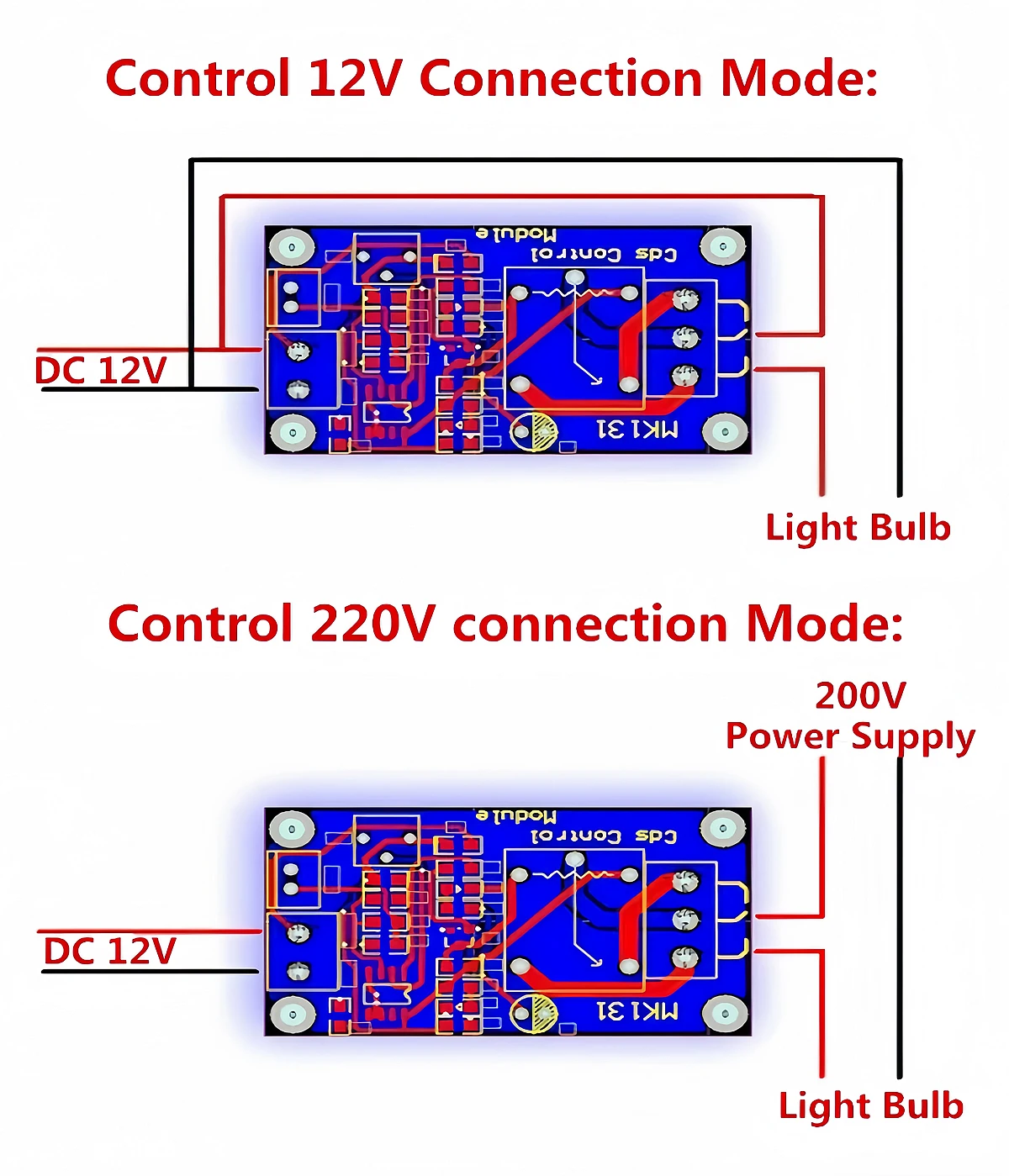
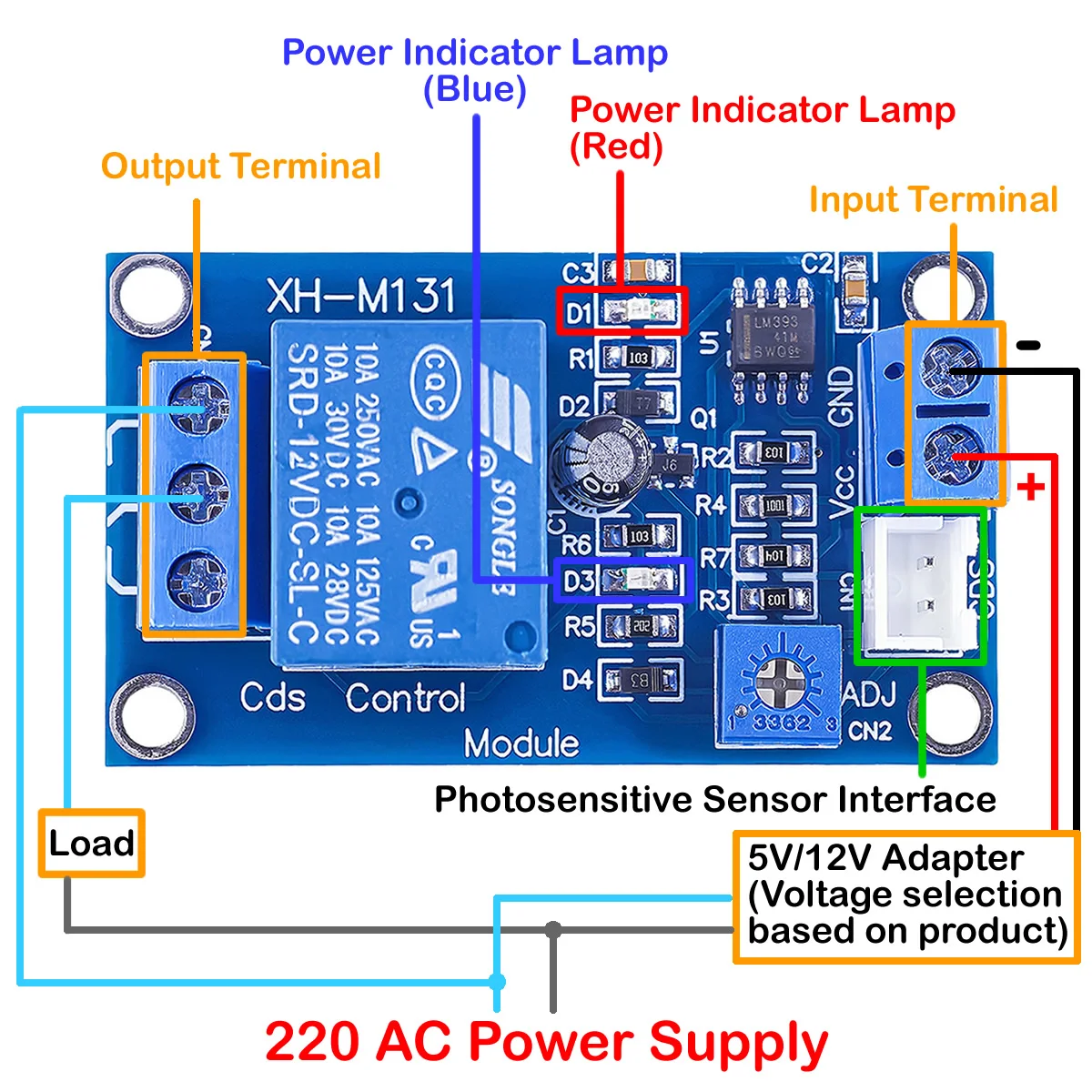
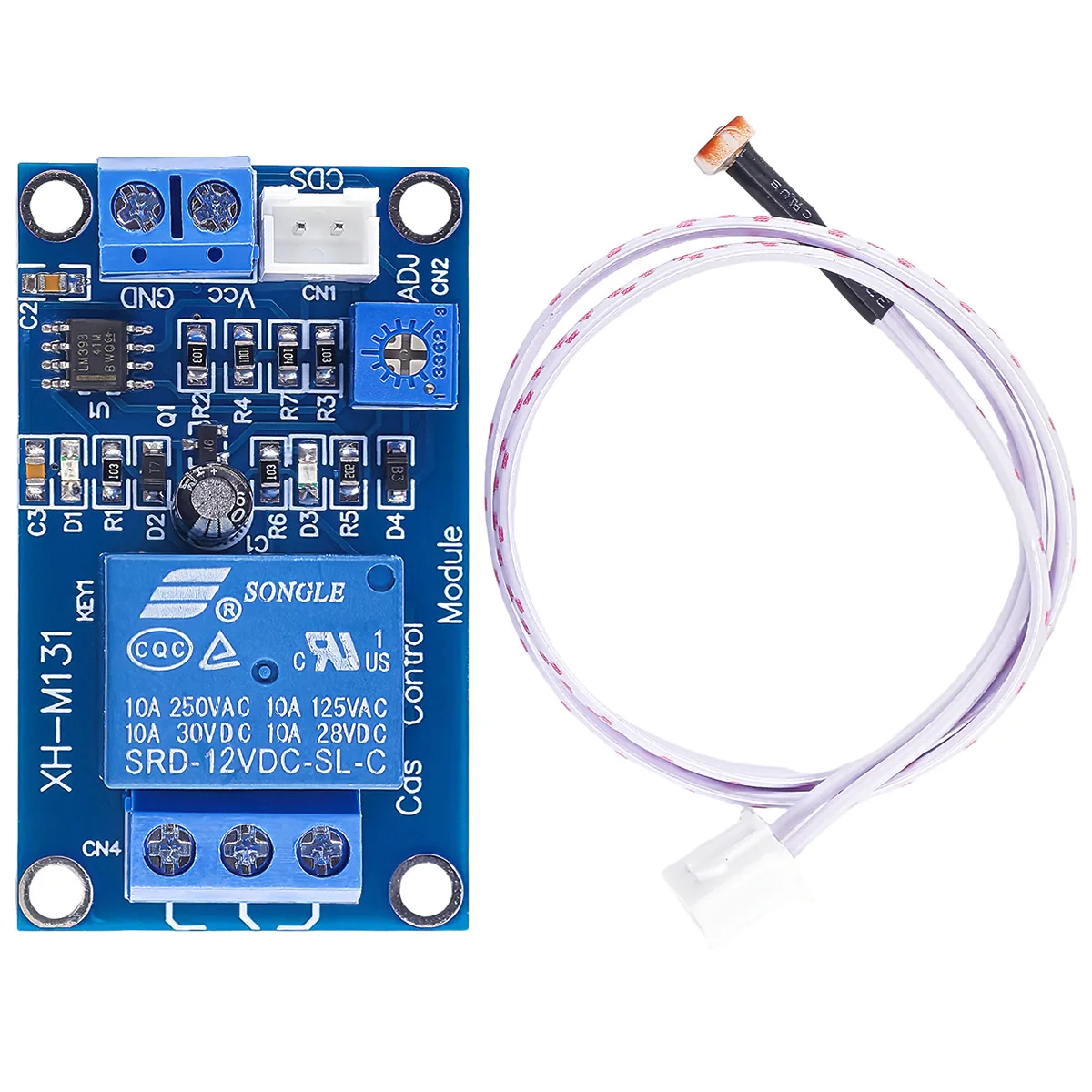
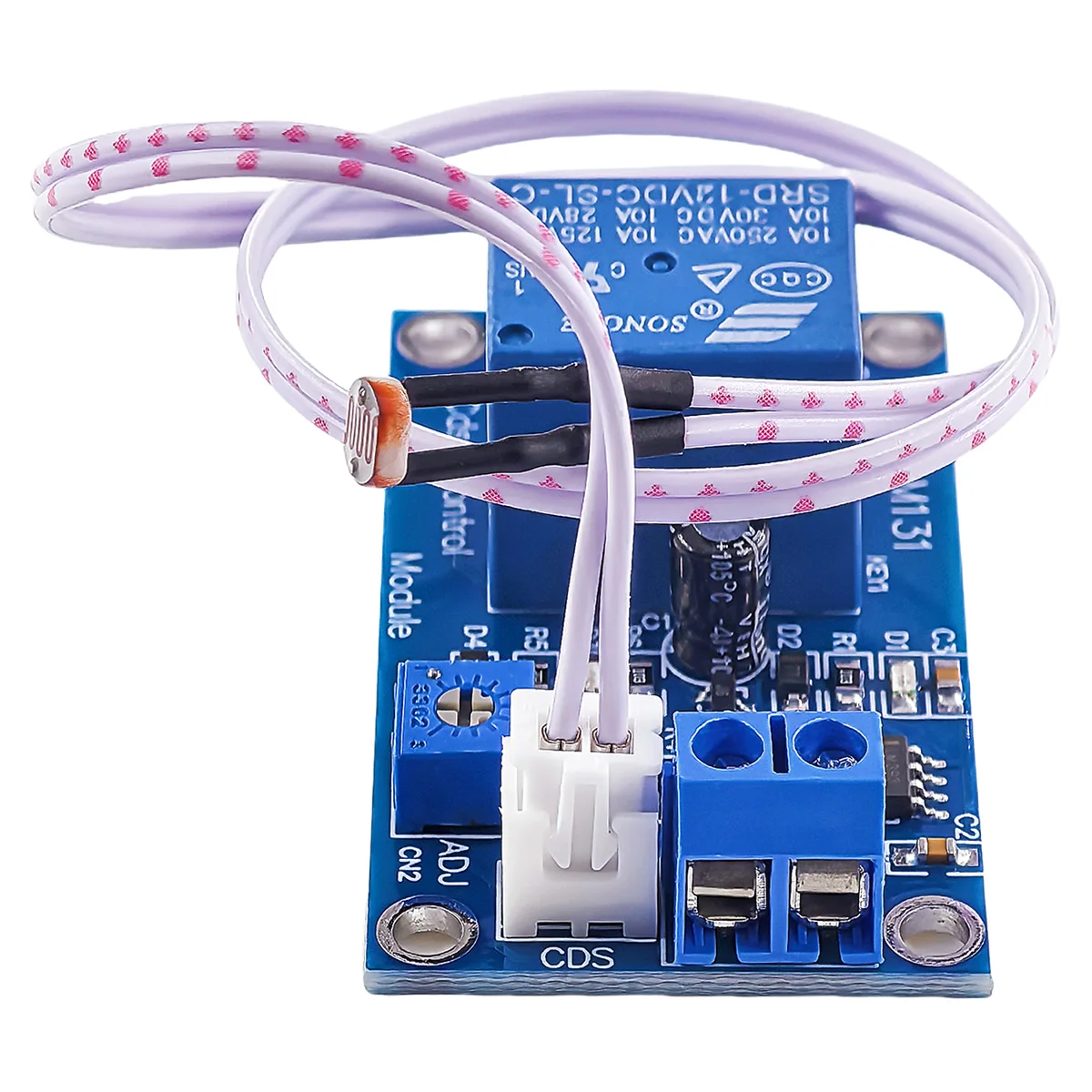
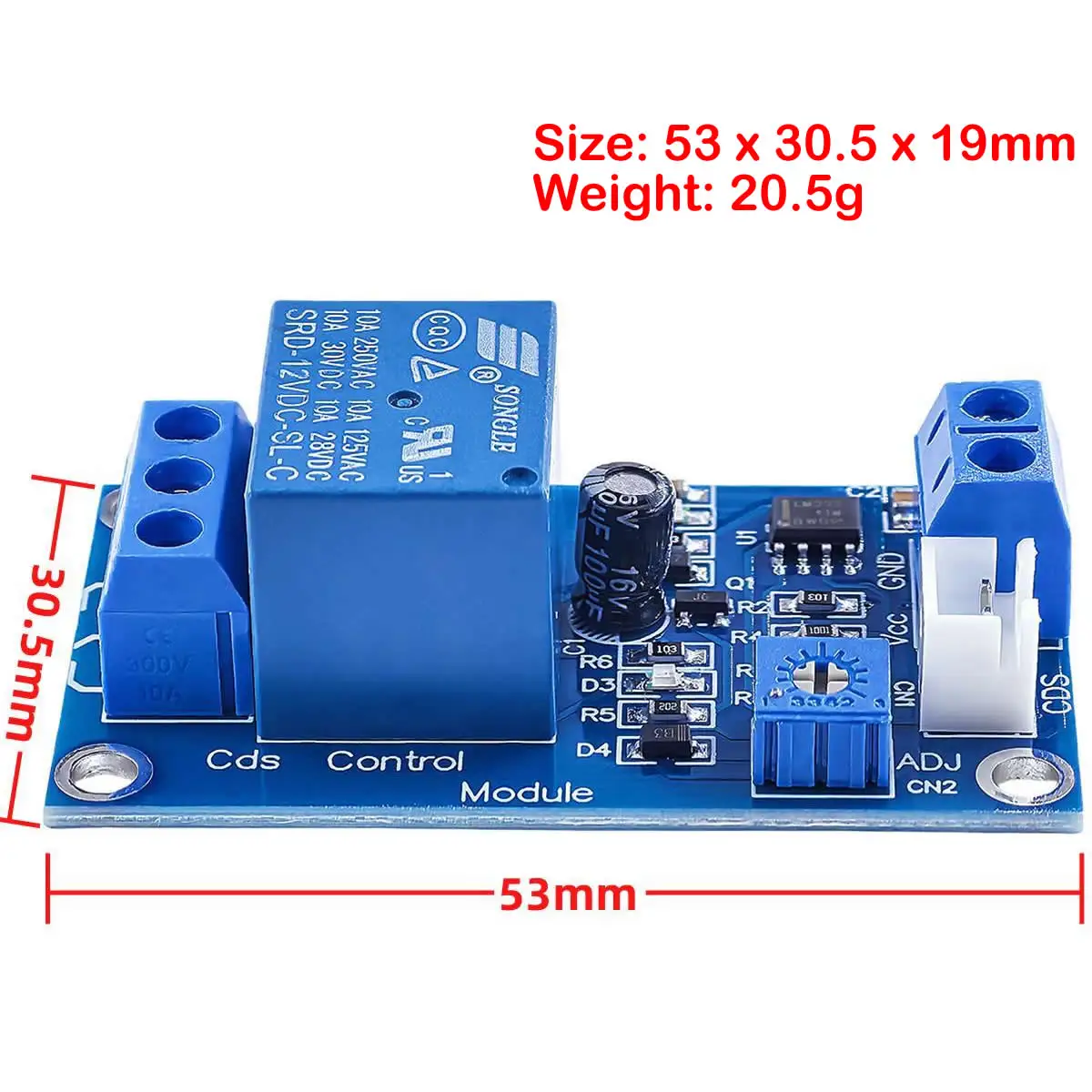
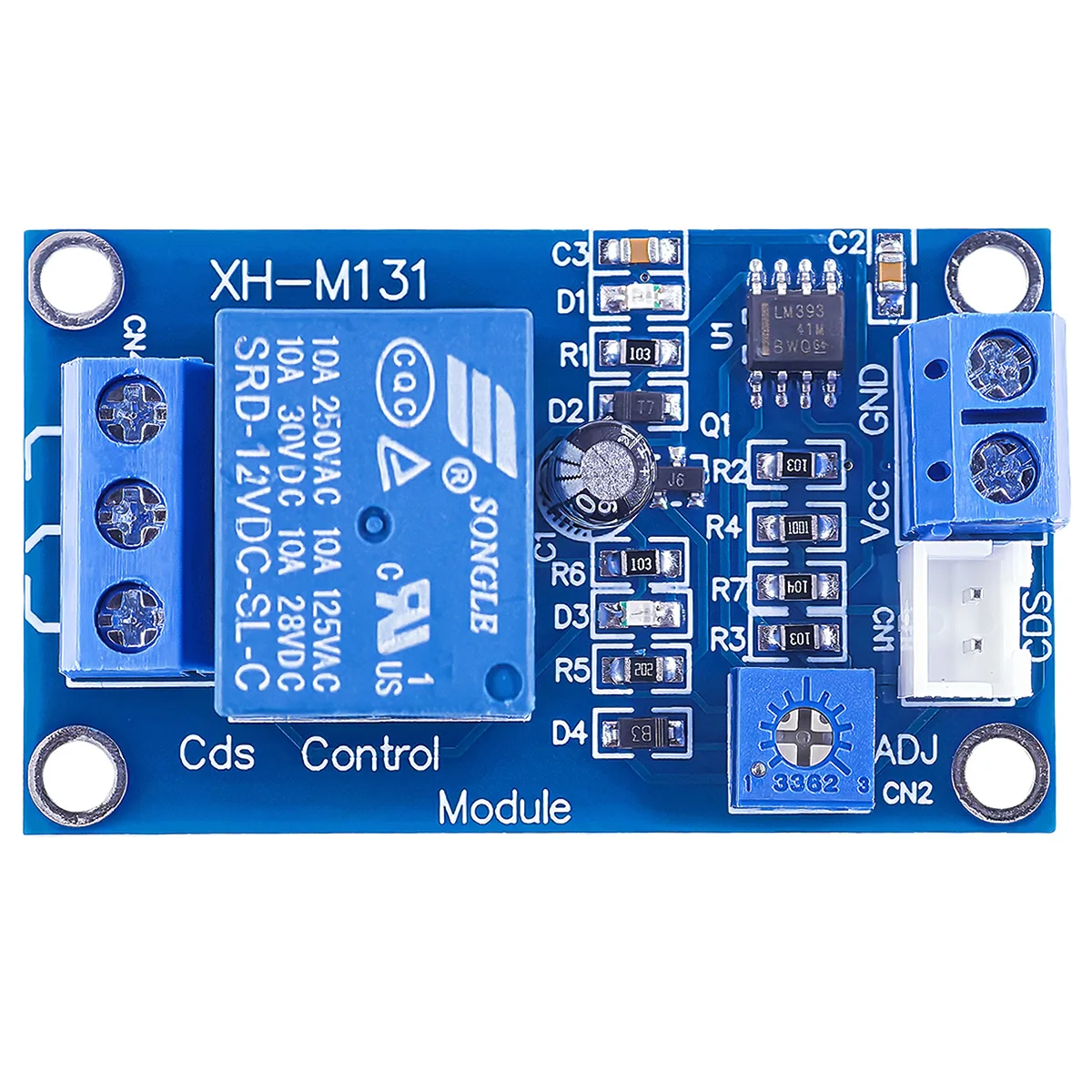
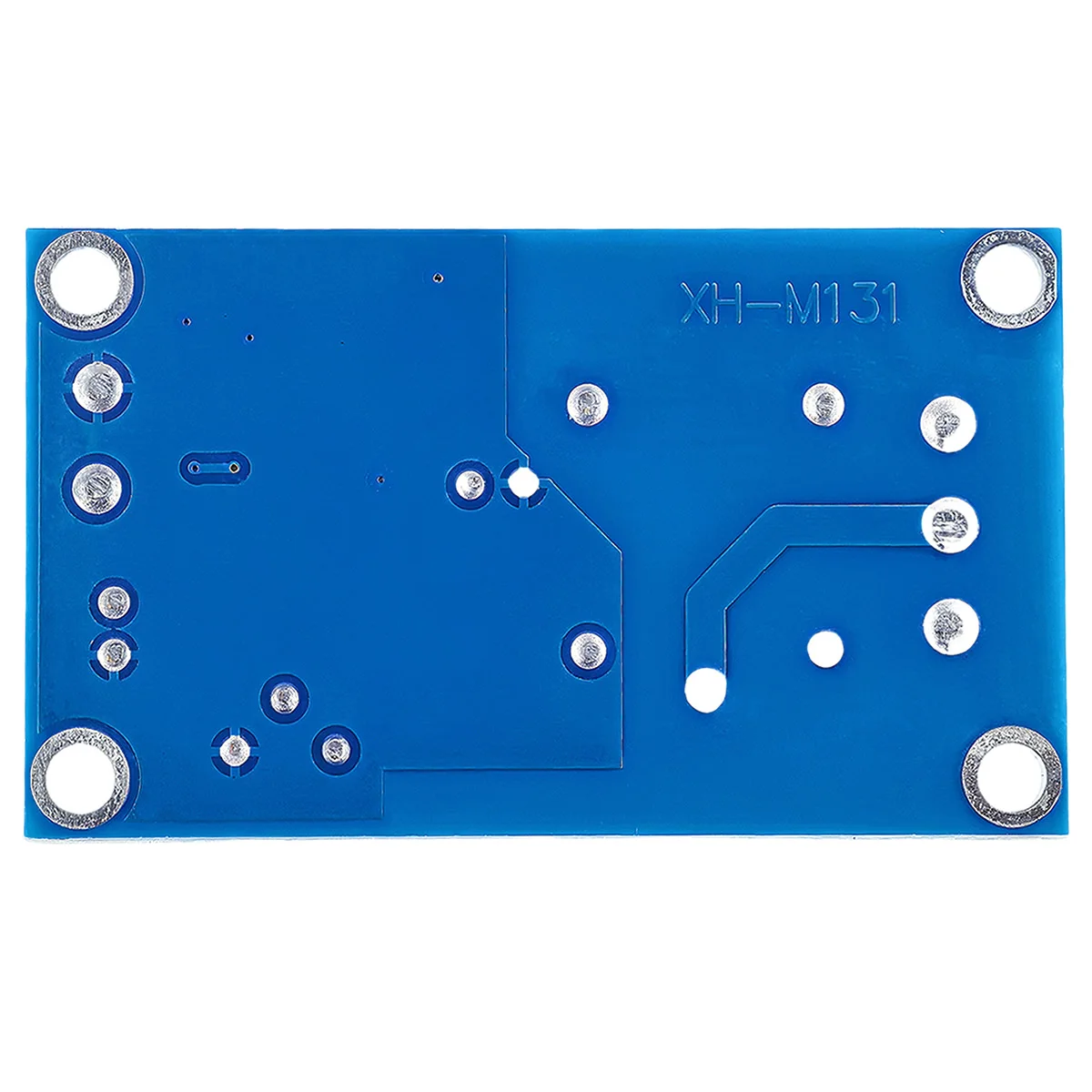


- ♥Hear From Our Happy Customers
- ♥Verified Buyer Reviews
- ♥Trusted by Professionals and Engineers
















